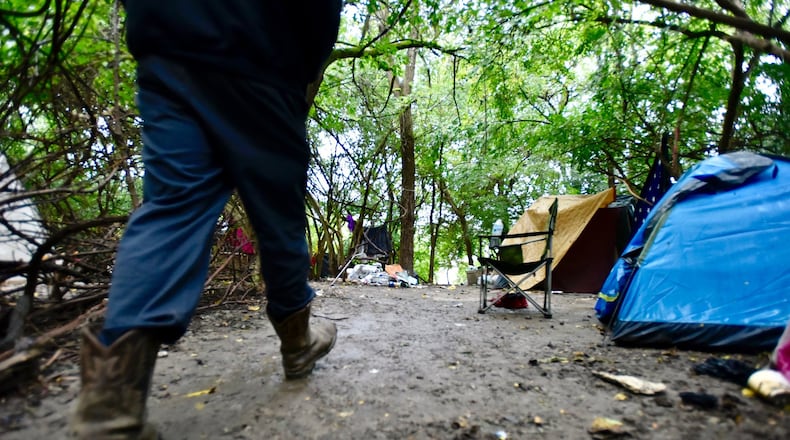Not on the list were three separate requests totaling $550,000 for transitional housing for the homeless. The commissioners had a lengthy discussion about the homelessness situation and the upshot is they want a comprehensive, regional discussion.
Commissioner Cindy Carpenter said she told the county homeless coalition they want funding applications vetted first so “it’s not just everybody getting an application and trying to get in here first.”
“We don’t want to fund anything until we’re sure that’s going to make a difference,” Carpenter said, “We don’t want to just keep giving money and it gets absorbed in and it’s never used for transitional housing.”
Annually, the county receives a bucket of money from the the U.S. Department of Housing and Urban Development to help low-to moderate-income areas countywide. The usual procedure is for a committee comprised of representative of the Development Department, Job and Family Services, the county engineer and Water & Sewer to vet applications and make recommendations to the commissioners.
For this pot of money, funds also have the caveat that the money “be spent to assist people/communities impacted by COVID or to prevent people from getting COVID,” the county’s Director of Development David Fehr said. So they bypassed the committee and the commissioners ended up picking other projects, and those that got either unanimous or a consensus of support among the three made the final list.
The county received nearly $7 million in requests for 25 projects. The largest request was $2 million from the Butler County Emergency Management Agency to repair parts of the Butler County Fairground damaged during mass vaccination clinics and to build a warehouse to serve as a vaccine operations center and supply storage for future pandemics and emergencies.
Commissioner T.C. Rogers said if they do decide to fund that project they will likely use other funding sources.
The largest of the approved projects was $160,000 to Fairfield Twp. for a Milton Road park project that would provide outdoor activities for people to reduce the spread of COVID-19. The Serve City food pantry in Hamilton and Village Food Pantry in New Miami each received funding from the commissioners, the rest of the money mainly went villages and townships for COVID-19 containment projects.
The commissioners could not amend the list they had already agreed upon, so Carpenter suggested voting on a $100,000 request by Family Promise of Butler County separately. That’s when the homeless conversation started.
Rogers said “I’m not callous,” but “I’ve seen millions and millions of dollars cities have spent to build housing and it hasn’t worked. Bring me one that works.”
At the start of the pandemic, the commissioners allocated $75,000 in unused 2019 CDBG money to get more people out of the close quarters in shelters and off the streets. The commissioners have nearly $75 million in American Rescue Plan dollars and received a number of requests to fund homeless projects. Serve City Executive Director David Hood is looking for $5.1 million of it for a $7.5 million project.
Commissioner Don Dixon told the Journal-News before they spend any more money there needs to be a regional review of the entire homeless system within the county.
“I understand when it’s said there are not enough homes, or not enough beds or this or that, but the fact of the matter is we’ve put millions and millions of dollars in that every year and I know it’s been difficult these past couple years, but it doesn’t seem to be getting any better,” Dixon said.
“There has to be some plan put in place to alleviate some of this, I’m pushing from that side but I’m not for building all these buildings for homeless people, and then have no way to continue to fund them except raise taxes on the people that’s working. We have to find another solution.”
There is no data for how many people in Butler County are homeless because the annual “Point In Time” head count wasn’t done last year due to the pandemic. The full count of sheltered and unsheltered for 2020 was sidelined, too. They found 70 people living on the streets in January but the full count was never tabulated. The PIT count in 2019 was 298.
Mindy Muller, chairwoman of the Butler County Housing and Homeless Coalition, told the Journal-News they are already working on it.
“The Homeless Coalition has just in the last few months put together a sub-committee to tackle that very issue of how do we get a more comprehensive collective approach,” Muller said. “How do we identify exactly what’s needed in the county, in all the different various jurisdictions and has a way of vetting projects that the coalition collectively feels move us in the direction of using the funds wisely, being good stewards of resources that are limited and making sure we are really doing projects that lead to long-term solutions.”
The commissioners have not decided yet how they will allocate the rest of the CDBG funds.
About the Author

